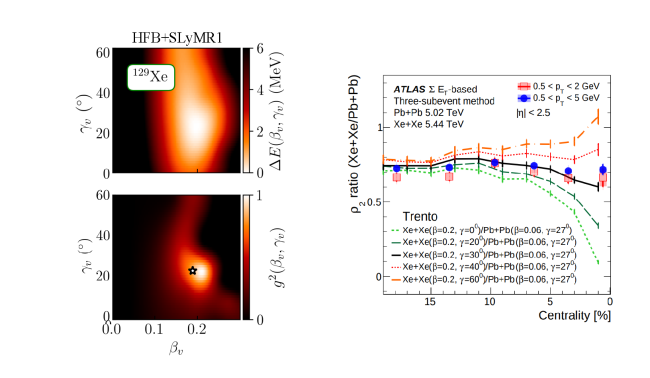Intersection of nuclear structure and high‐energy nuclear collisions
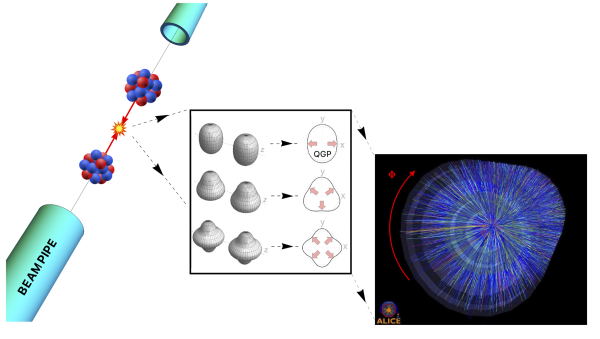
Note to applicants: This a 5-week "hybrid" program with a one-week “hybrid” work-shop embedded (however see disclaimer below). Please specify in the COMMENTS section of the Application Form either [In-Person], [Virtual] or [Either] to reflect your preferred mode of attendance. Please be aware that all in-person participants must show proof of vaccination against COVID-19 upon arrival to the INT.
Disclaimer: Please be aware that due to ongoing concerns regarding the COVID-19 pandemic, this program may be changed from in-person to hybrid, or to online-only if necessary.
Until now, the communities of high-energy heavy-ion physics and of low-energy nuclear structure physics have been largely disconnected. To model and understand the evolution of the quark-gluon plasma (QGP), heavy-ion physics requires some input from nuclear structure physics that is typically simplified or assumed to be well-known. However, over the past decade both our understanding of the evolution of the QGP and the quality of the experimental data have become good enough to grant sensitivity to the details of the geometry of the colliding ions, and thus challenge the nuclear structure input. Measurements from collisions of 238U or 129Xe nuclei at high energy, for instance, can only be understood via the inclusion of nuclear deformation effects in the theoretical models. The need for a precise modeling of the nuclear structure was additionally emphasized in 2021 by isobar collisions at RHIC, i.e., 96Ru+96Ru and 96Zr+96Zr.
It is not yet established how the manifestations of nuclear structure should evolve across energy scales. High-energy nuclear collisions open a new window to access a wide range of structure phenomena from a new perspective, such as quadrupole and octupole deformations, triaxiality, shape coexistence and shape evolution, clustering, neutron skin. Work is needed to clarify to which extent the structure information obtained from such experiments is connected to that used or inferred in low-energy applications. To this aim, it is also important to clarify how beam-energy dependent effects, such as nPDF, gluon saturation, and the partonic structure of nucleons, impact the low-energy structure of nuclei.
This program will gather experts from the low-energy and the high-energy communities to address these issues and advance our understanding of nuclear physics in general. We want to create awareness in the low-energy community of the fact that their tools and theoretical frameworks have applications in high-energy collisions, and that high-energy experiments provide a great deal of information about the structure of atomic nuclei. Furthermore, we hope to foster active collaborations between the two communities that will improve state-of-the-art models and event generators for high-energy nuclear applications.
PROGRAM FORMAT
The program will consist of a similar number of talks from the nuclear structure/low-energy side and the heavy-ion side. We will have two seminars each day in the morning, and allow for the possibility of additional discussions in the afternoon. We plan to host a 5 day workshop titled “Connecting nuclear physics across energy scales: from nuclear structure to high-energy nuclear collisions”, consisting of shorter (e.g. 40 minute) talks, broadcast over zoom. With this workshop we want to give a broader view of research topics in nuclear physics across energy scales, with the goal of grasping new connections among them.
The following describe the tentative plan and key issues to be addressed. We shall try to follow this outline, although with flexibility depending on the needs and availabilities of the speakers.
- Week 1: Nuclear structure and anisotropic flow in high-energy collisions. Anisotropic flow in heavy-ion collisions emerges as a hydrodynamic response to the geometry of the quark-gluon plasma, which in turn is determined by the structure of the colliding ions. The collision process is thought to perform a quantum measurement of the positions of the nucleons at the time of scattering. Nucleon-nucleon correlations in the nuclear wavefunctions are then accessible via multi-particle correlation observables in the final states. Can we rigorously justify or formulate this picture? How the Glauber Monte Carlo approach commonly used in high-energy nuclear scattering is related to variational (e.g. energy-density functional) approaches to the nuclear many-body problem? A consequence yet to be explored of this picture is that heavy-ion collisions are fully sensitive to dynamical correlations and shape fluctuations in the nuclear ground states. What are the implications of this result? What information can one access via high-energy collisions that would otherwise be inaccessible via low-energy experiments? How does this impact the current frontiers of nuclear structure studies for large ions?
- Week 2: Precision nuclear structure studies via isobar collisions. Collisions of 96Zr and 96Ru nuclei at RHIC have established isobar collisions as a precision tool for nuclear structure studies. In particular, by studying how final-state observables vary as one moves from 96Zr+96Zr collisions to 96Ru+96Ru collisions, one can access precisely the differences in structure between these isobars. One question is, then, how the model-independent information extracted from isobar collisions (differences in deformations, skins, etc.) compares to the information obtained in low-energy experiments. Collisions of isobars at RHIC have, for instance, conclusively revealed a significant octupole deformation in 96Zr. What implications does this result have on the ongoing efforts for understanding octupole-deformed ions in low-energy nuclear physics? A second outcome of the isobar collision campaign is the possibility of determining the difference in neutron skins between two ions. To what extent can we determine the neutron skin of 208Pb and 48Ca, both recently measured at Jefferson Lab, via ultrarelativistic collisions? High-energy experiments offer, in addition, the unique possibility of studying the evolution of dynamical quadrupole, octupole, and hexadecapole correlations along the samarium isotopic chain. This is the only chain of stable isotopes featuring a transition from nearly-spherical nuclides (144Sm) to well-deformed nuclides with fully-developed rotational bands (154Sm). Does adding neutrons one-by-one have the same observable consequences across energy scales?
- Week 3: Workshop week. It covers all topics.
- Week 4: Ab-initio approaches to light ions and small system collectivity. The past two decades have witnessed tremendous progress in the development of so-called ab-initio approaches to the nuclear many-body problem, where the nuclear force emerges through chiral effective field theory of QCD. Ab-initio calculations are particularly suitable for studying strongly-correlated well-deformed small nuclei. The observation of hydrodynamic-like behavior in the final states of small systems, such as proton-nucleus and proton-proton collisions, triggers fundamental questions about the emergence of collective behavior, and whether it can be ascribed to a dynamical response to the system’s geometry or not. Could we exploit the precise knowledge provided by ab-initio calculations to stress-test the hydrodynamic paradigm? Conversely, can we use high-energy nuclear collisions to test the predictions of ab-initio nuclear structure calculations? The prime example of a strongly-deformed light ion is neon-20. Can we engender strong geometric effect at small multiplicities by comparing 20Ne collisions to collisions of nearly-spherical 16O nuclei? Is there a way to make a connection between nuclear structure at low energy and effective theory of QCD at high energy, e.g. the color glass condensate effective theory? Could collisions in fixed-target mode with a gas detector by the LHCb experiment be used as a means to compare systems across collision energies that differ by two order of magnitudes (√sNN ≈ 70 GeV vs. √sNN ≈ 7 TeV)?
- Week 5: Parton structure in high-energy nuclear experiments. In the current understanding of high-energy nuclear collisions, the geometry of overlap and the granularity of the deposited energy density distributions are determined by the nucleons that participate in the collision process. One way or another, then, one has to assign some effective partonic structure to the nucleons participating in the scattering of nuclei at high energy. The same kind of nucleon structure will play a role in the phenomenology of electron-ion collisions at the future EIC. What observable quantities would permit us to make a connection between EIC physics and heavy-ion physics via the nucleon structure? Dynamical small-x evolution shapes the structure of nucleons at high energy. Would small-x (saturation) calculations provide a consistent description of both EIC and heavy-ion data? A direction of research that is yet to be explored concerns the impact of many-body correlations in nuclei in electron-nucleus scattering. Are nuclear parton distribution functions (nPDF) modified in presence of nuclear deformations? What about double parton distributions in nuclei? What observable differences would emerge from the comparisons of e-A collisions along an isotopic chain (such as e-144Sm vs. e-154Sm)? Can we possibly use well-deformed ions to devise new observable signals of gluon saturation?
There will be a $60 registration fee to attend the workshop week (February 6-10) in-person. The registration fee includes participation in the workshop, lectures, and coffee breaks.
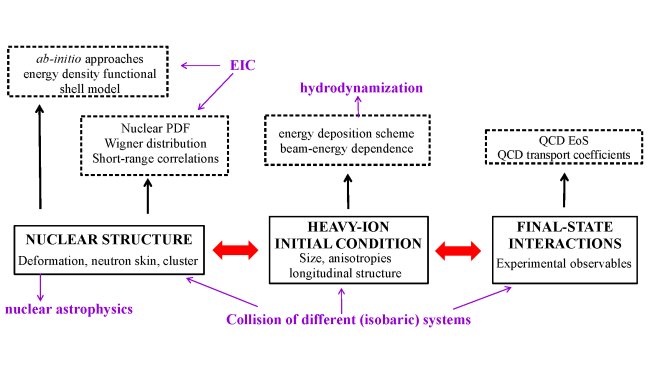
Intersection of nuclear structure and high‐energy nuclear collisions
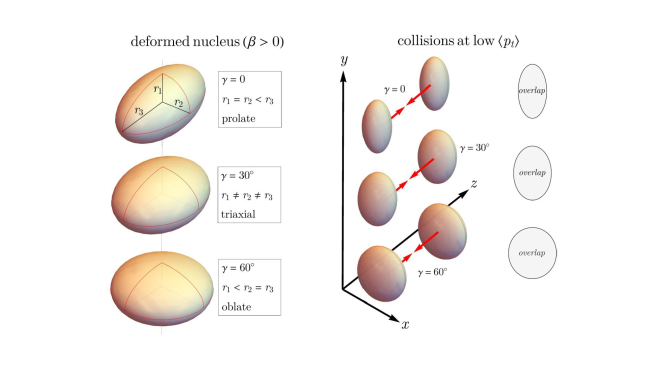
Intersection of nuclear structure and high‐energy nuclear collisions
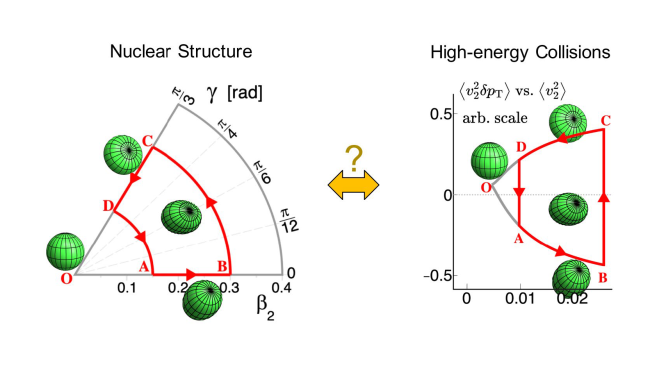
Intersection of nuclear structure and high‐energy nuclear collisions
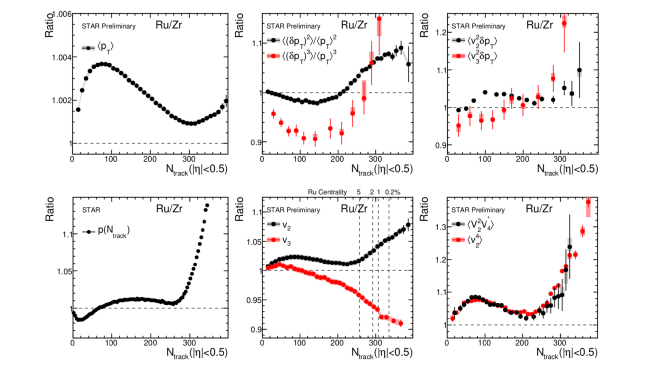
Intersection of nuclear structure and high‐energy nuclear collisions
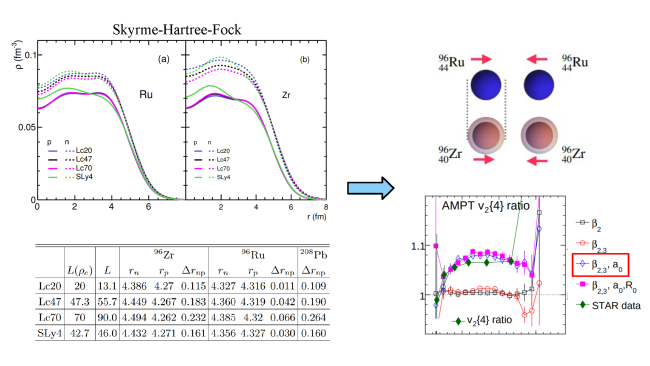
Intersection of nuclear structure and high‐energy nuclear collisions
